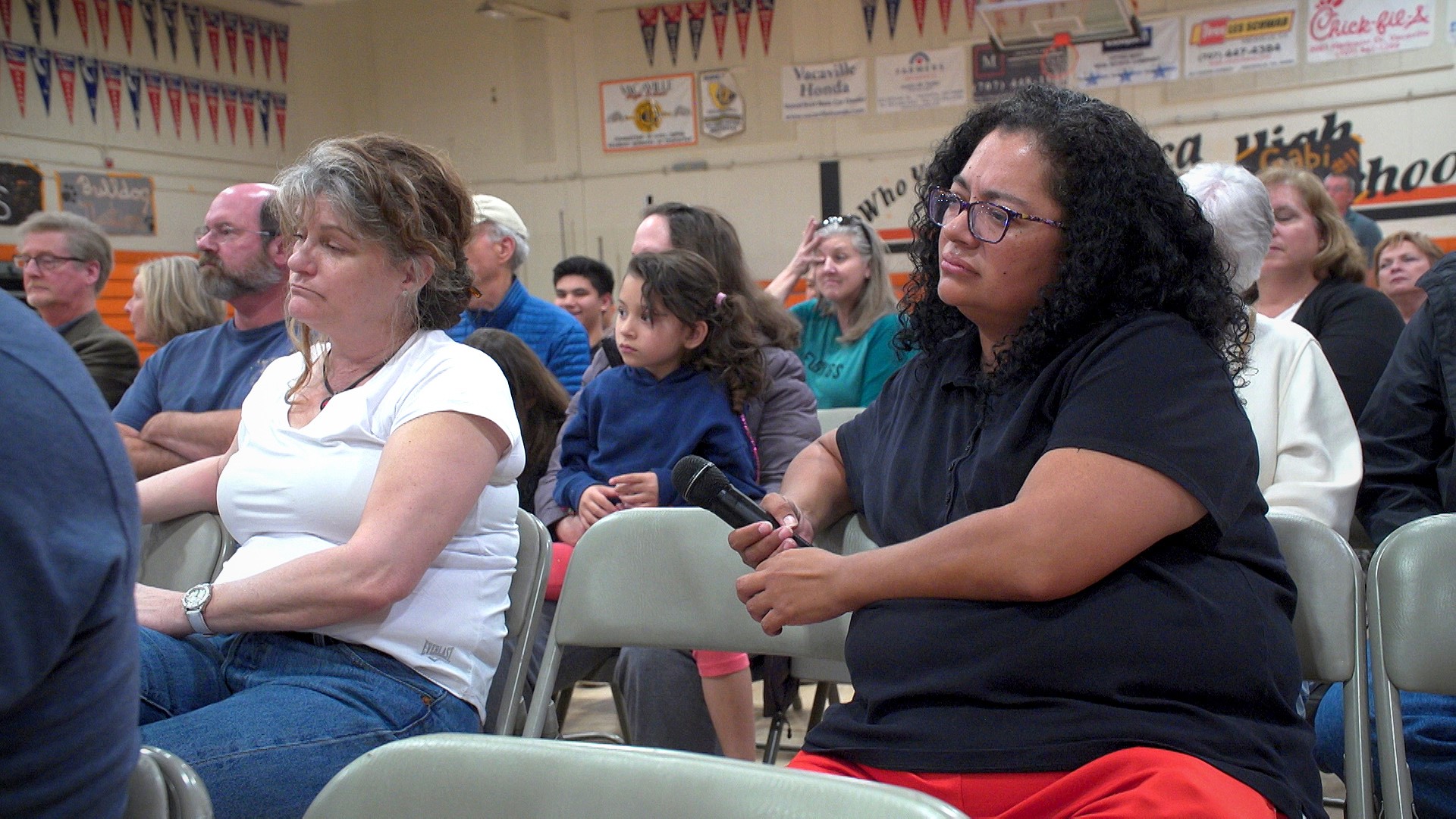VACAVILLE, Calif. — Parents and children shuffled in and out of Vacaville High School on Wednesday night for a town hall with health officials who were trying to quell fears about students being at school amid the county’s recent coronavirus emergency.
One of those parents is Ana Medina, who has a child who suffers from asthma and is concerned that the condition would add to her kid's probability of contracting the virus known as COVID-19.
Medina's fear is compounded with the fact that the country's first case of COVID-19 transmission spread throughout the community instead of through travel was in Solano County. The patient was woman who had was transferred from NorthBay VacaValley Hospital to UC Davis in Sacramento, where she later tested positive for the virus.
"That was a red flag for me," Medina said.
It was a red flag for the county, too, which declared a local health emergency shortly after the woman tested positive. As of March 4, nine counties have declared local health emergencies.
Parents also brought up the idea that the state is lacking in testing kits. While it's unclear how many kits individual counties have, Gov. Gavin Newsom announced last week that the state received 1,200 testing kits from the Centers for Disease Control and Prevention.
At a Wednesday press conference, Newsom said the state now has more than 9,500 kits available for the 14 labs in the state to test for the virus.
There are 53 confirmed cases of the virus in California, and at least 9,400 people across 49 counties are being monitored, Newsom said at a Wednesday press conference.
Solano County Health Officer Dr. Bela Matyas told ABC10 that it can take anywhere between 12 and 18 months before a vaccine is created and released to the public.


But while hundreds of people roam the halls of area schools on a daily basis, the virus is not likely to spread on campus, Matyas said.
"What we've learned so far about this disease is that the risk is highest for people who are older or have underlying health issues," Matyas explained. "So that means students are relatively protected. It doesn't seem to affect children of school age. Which means your children are not at a risk to get ill."
That was enough to put some parents at ease.
"I do feel a little bit more relieved," Medina said. "I know what to do and what my next step will be."
BACKGROUND:
According to the CDC, coronavirus (COVID-19) is a family of viruses that is spreadable from person to person. Coronavirus is believed to have been first detected in a seafood market in Wuhan, China in December 2019. If someone is sick with coronavirus, the symptoms they may show include mild to severe respiratory illness, cough, and difficulty breathing.
Currently, there is no vaccine, however, the CDC suggests the following precautions, along with any other respiratory illness:
- Avoid close contact with people who are sick.
- Avoid touching your eyes, nose, and mouth.
- Stay home when you are sick.
- Cover your cough or sneeze with a tissue, then throw the tissue in the trash.
- Clean and disinfect frequently touched objects and surfaces using a regular household cleaning spray or wipe.
- Wash your hands with soap and water for a minimum of 20 seconds.
The CDC also says facemasks should only be used by people who show symptoms of the virus. If you’re not sick, you do not have to wear a facemask. The CDC says the immediate risk to the U.S. public is low.
Follow the conversation on Facebook with Kevin John.
READ MORE:
FOR NEWS IN YOUR COMMUNITY, DOWNLOAD THE ABC10 APP:
►Stay In the Know! Sign up now for ABC10's Daily Blend Newsletter



